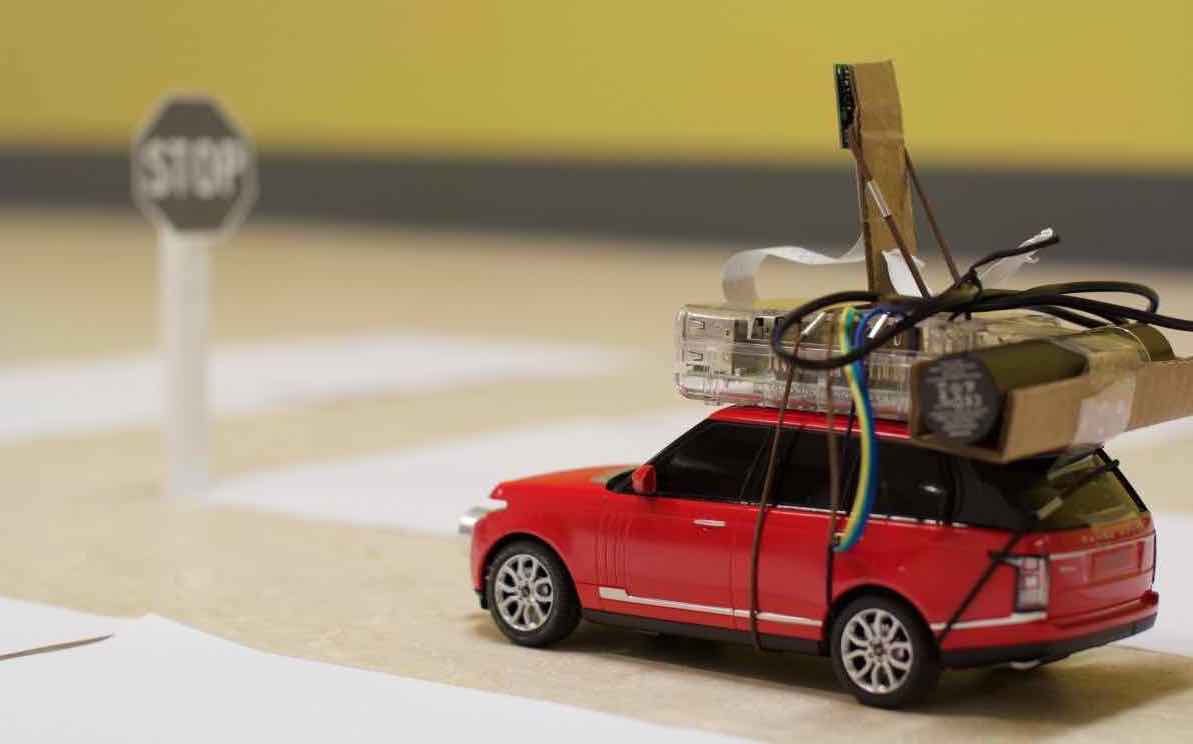Programmer Makes Self-driving Toy Car Powered By Raspberry Pi, Arduino, Python
 Short Bytes: While tech giants like Google, Microsoft, Apple and others are busy exploring the new horizons of self-driving cars, a programmer has used his DIY companion Raspberry Pi to build his own self-driving toy car.
Short Bytes: While tech giants like Google, Microsoft, Apple and others are busy exploring the new horizons of self-driving cars, a programmer has used his DIY companion Raspberry Pi to build his own self-driving toy car.
Taking the Pi-powered creations to the next level, Zheng Wang from Bridgwater State University has modified his remote-controlled car and taught it to follow a path, detect the obstacles, and read road signs.
How Zheng’s Raspberry Pi-powered self-driving car works?
On his blog, Zheng explains that the complete system consists of three parts: the input unit, processing unit and the RC car control unit.
The input unit consists of a Raspberry Pi Model B+ attached with a camera and an HC-SR04 ultrasonic sensor. This unit collects the data (color video and sensor data) that is sent to a computer over local WiFi with the help two client programs running on Pi.
The processing unit receives the video data from Raspberry Pi and it’s converted to gray scale and decoded into numpy arrays. Zheng further explains the other jobs performed in the processing unit — “OpenCV Python neural network training and prediction (steering), object detection (stop sign and traffic light), distance measurement (monocular vision), and sending instructions to Arduino through USB connection.”
After performing the above-mentioned tasks, signals are sent to the Arduino board that simulates the controlling actions in the car. Zheng mentions that his autonomous RC car easily moves on the track and avoid collisions.
If you are interested in working on this project, you can find the relevant documentation on GitHub and Zheng’s blog.
Did you find this self-driving Raspberry Pi-powered car DIY interesting? Share your views in the comments below.

No comments:
Post a Comment